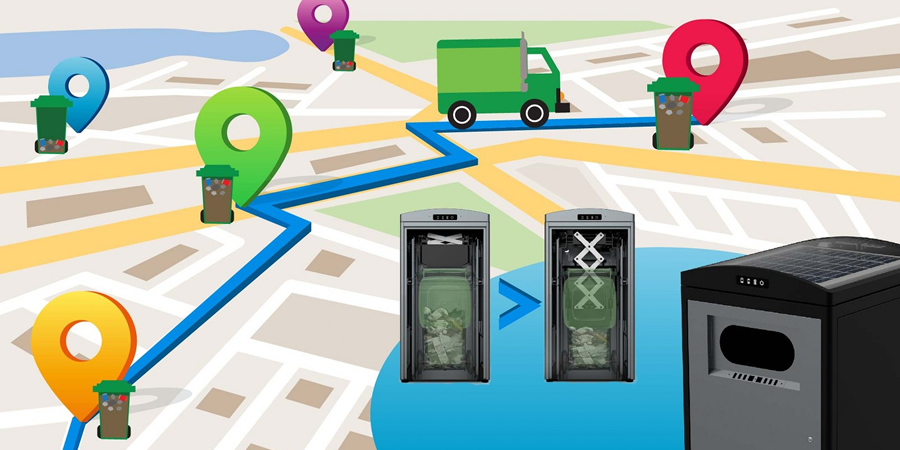The world roughly produces over two billion tonnes of municipal solid waste every year. This is the amount of garbage that can fill over 800,000 Olympic-sized swimming pools. In the Gulf Cooperation Countries (GCC) alone, the picture of municipal waste management is not so pretty. By 2025, the total waste generated across the GCC is expected to touch 164 Mn MT per annum from 128 Mn MT in 2019. The existing landfilling strategies are not adequate to tackle the waste efficiently, according to reports.
Moreover, as countries vaccinate their populations against the Covid19 virus, the amount of hazardous, clinical waste generated is going to rise. So much so that experts warn of a ‘looming crisis’ in places where the waste collection systems are inefficient.
The third edition of The Global E-Waste Monitor 2020 report states that in 2019, only 9.3 Mt (17.4%) of global e-waste was documented as collected and recycled. Furthermore, it states that the other 44.3 Mt (82.%) of e-waste generated in 2019, if dumped, traded or recycled under substandard conditions, will have varying environmental impacts around the world.
In 2018, the highest policy-making body of the ITU, the Plenipotentiary Conference, set up a target to increase the global e-waste recycling rate to 30% by 2023. The amount of e-waste formally collected and recycled per year increased by 1.8 Mt from 2014 to 2019, while e-waste generated increased by 9.2 Mt in the same period, suggesting that current collection and recycling methods are not synced with global e-waste growth.
The efficacy of AI and machine learning
Fortunately, the adoption of artificial intelligence (AI) techniques and machine learning offers alternative computational approaches to solve solid waste management (SWM) as well as E-waste problems.
To enable smart solutions for waste management, government departments along with system integrators, network operators and technology providers can leverage such technologies to provide intelligence to wastebins, using an IoT prototype with sensors that collect data over the Internet. Such data when processed by intelligent and optimized algorithms, can be used to manage waste collection, disposal and recycling mechanism with far more efficiency.
Embracing such possibilities of AI and ML, FANUC, an international robotics company, has come up with the first robotic sorting machine for the waste management industry. The Recycleye Robotics machine can identify, sort, and pick materials as fast as 55 picks per minute compared with 40 to 45 picks by humans, according to spokesperson Ashika Patel.
“The cameras in the robots identify the waste objects and will capture around 60 images per second, and that data is transported to the cloud, which then allows us to provide high-level and actionable insights to the client. We can provide data to the client such as trend analysis and plant downtime,” says Patel.
Recycleye Robotics is powered by Recycleye Vision, an artificial intelligence (AI) vision system that constantly trains and learns new object detection, facilitating the robotic waste picking system to adjust to changing material stream composition without any need for manual upgrades.
Similarly, in the UK, a local council is partnering with the environmental charity Hubbub, startup Ellipsis Earth and fast food brand McDonald’s to use drone data to inform the placement of bins, street cleaning schedules, and behaviour change campaigns around litter. Using drones, fixed cameras, and mobile and vehicle technology in public spaces detailed litter maps, identification of hot spots , and monitoring of litter movement can be achieved.
The same technology helped authorities in the Italian town of Sorrento to reduce litter by 45% and cigarette butt waste by 69%.
AI and machine learning have been efficient at tackling complex problems, learning from experience, and handling uncertainty and incomplete data. The potential of AI in solving the diverse SWM problems, including forecasting of waste characteristics, waste bin level detection, process parameters prediction, vehicle routing, and overall SWM planning cannot afford to be underutilized. The different AI models and techniques applied in SWM, application domains, performance parameters, as well as the software platforms used to implement such models, will be sought out in the waste management sector.
Collaboration is key
Although still not considered as an industry per se, various aspects of waste management like recycling and reusing have huge benefits in revenue generation. Consequently, many companies are jumping into this industry for a long-term investment.
For instance, French waste management companies Suez and Veolia have partnered to become the world’s largest waste management and recycling group by revenue, with €37bn/year in sales.
In the UAE, the Ministry of Climate Change and Environment is currently operating a municipal solid Waste-to-Energy plant to convert 300,000 tonnes of waste annually, covering Ajman and Umm Al Qaiwain. The Dubai Centre for Waste Processing managed by Dubai Holding in collaboration with local and international companies aims to convert nearly 5,666 tonnes of municipal solid waste produced by Dubai daily into clean renewable energy to power the local electricity grid with nearly 200 megawatts of clean energy.
The collaboration of the government bodies, ICT players, and other relevant stakeholders is crucial in helping the waste management industry in finding efficient strategies and solutions for the SWM and E-waste problems with the implementation of AI and machine learning technologies.
With the cooperation of the citizens in practicing restraint in producing waste coupled with the efficiency of advanced technologies such as AI and ML, the objective of achieving the goals of a cleaner and greener planet should not look too daunting.











